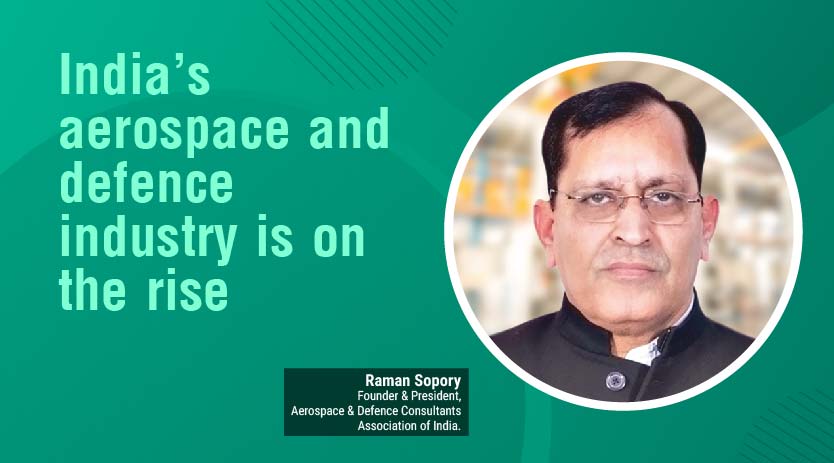Pharma industry is exploring newer ways of manufacturing
November 1, 2021 3:35 pm
“Pandemic has been a time of immense learning for the pharma sector.”
What transformations and benefits do you observe with 3D and robotics technologies to automate specific processes?
While it’s not a complete overhaul of the process or the device, 3D is, in fact, adaptive manufacturing that simplifies the process of developing a product and yields quicker results. ARAPL Robots are programmed as per the specific applications and requirements to perform the actions faster using 3D technology.
One of the uses of robotics is to allow for greater automation in various processes. In many aspects of construction, specifically manufacturing, packing, and building, automating these processes is becoming the goal. With greater development in robotics and machinery, construction companies are becoming more open to utilising technology. With robotic technology, you can expect traditional construction activities like welding, material handling, packing, dispensing, cutting, and packing to be fully automated. This will not only allow for precision and accuracy throughout all construction processes, but it also represents significant time and financial savings as well.
How innovative practices are being adopted for pharma manufacturing in view of safety protocols due to pandemics that concern human wellness?
Like other sectors, the pandemic has been a time of immense learning for the pharma sector as well and 2020 witnessed a skyrocketing of demand for it too. At the same time, it wasn’t easy for operations in the production level as Covid-19 and its aftermath affected a lot of their workforce also. Nonetheless, the sector adapted to the trying times and innovated its working to overcome the crisis. The sector is using Artificial Intelligence (AI) and Machine Learning (ML) for quickening the drug discovery and development processes.
Since large volumes of data and development requires high performance systems to analyse data and derive value from it, pharma companies are looking to open up their crucial data to third parties, thus making data management a crucial area of focus.
In keeping with the changing market dynamics, the pharma industry is exploring newer ways of manufacturing. While single-use-technology is gaining popularity, continuous manufacturing processes are being preferred to address the increasing focus on biopharmaceuticals as they achieve high productivity and minimise wastage.
With the advancements in omic and data analysis, which give new insights into how the human body responds to drugs, novel manufacturing methods are also making personalised medicine a reality. This necessity for precision medicine has got pharma companies rethink the manufacturing process. Research is already underway for making advanced 3D printers that print tissues/cells, and eventually, these (bio printers) will help in pushing innovation in biopics, tissue engineering and microfluidics too.
How is industry 5.0 becoming an effective platform for optimising processes to improve production?
While Industry 4.0 came with promises of sustainable and efficient manufacturing, it failed to deliver due to more focus on mass production instead of sustainability. This is where Industry 5.0 has succeeded, with a more human centred approach — by looking at how technology can be adapted to the workers’ needs instead of replacing them. For sustainability, 5.0 have made it necessary to develop circular processes that reuse, repurpose and recycle resources and consequently reduce environmental impacts. Moreover, use of AI and additive manufacturing also optimises resource-efficiency and minimises wastage. At the same time, it’s crucial for manufacturers to develop a higher degree of robustness in production to safeguard themselves against disruptions and crises in future, like Covid-19.
What advancement and new maintenance technologies are bracing up for optimising automation practices for manufacturing in the current scenario?
The aftermath of the Covid-19 pandemic still looms large over the world. Even in countries where the effects have begun to recede, things are still very difficult. Asia, for example, is facing a sudden shortage of materials along with a steep drop in demand and worker unavailability. On the plus side, there’s an increase in the hiring for mechanical engineers for robotics by four per cent. So, as companies automate their process, they will create new job opportunities in robotics and maintenance.
The coming months will also witness accelerated adoption of solutions that will help companies adapt new norms from ensuring safe-distancing to tracking employee’s health and supporting remote collaboration.
Cookie Consent
We use cookies to personalize your experience. By continuing to visit this website you agree to our Terms & Conditions, Privacy Policy and Cookie Policy.



















 English
English Hindi
Hindi